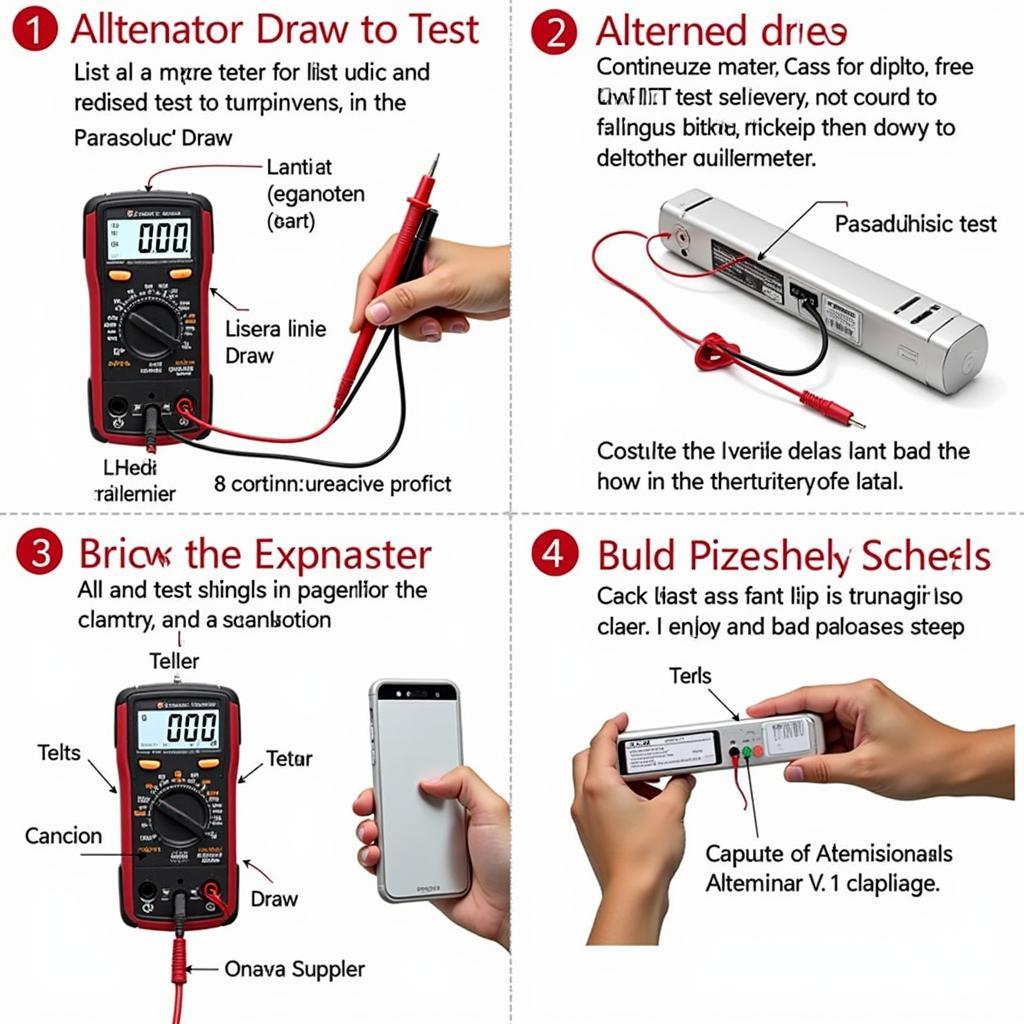The brake warning light on your dashboard is a crucial safety feature, designed to alert you to potential issues within your braking system. Ignoring this warning could lead to decreased braking performance and dangerous driving situations. This comprehensive guide delves into the common symptoms associated with a lit brake warning light, explores potential causes, and outlines steps for diagnosis and resolution.
Modern vehicles are equipped with sophisticated electronic systems, and your braking system is no exception. When the brake warning light illuminates, it triggers a cascade of questions for the driver. Is it safe to continue driving? Is it a minor issue or a major malfunction?
Understanding the Brake Warning Light
The brake warning light is typically represented by a red circle with an exclamation mark (!) or the word “BRAKE” inside. In some vehicles, it might be accompanied by an audible chime to further grab your attention.
A lit brake warning light can indicate several issues, including:
- Low brake fluid level: One of the most common reasons for the warning light to activate is low brake fluid. Brake fluid is the lifeblood of your braking system, responsible for transmitting force from the brake pedal to the wheels.
- Engaged parking brake: It’s easy to overlook, but if your parking brake is even slightly engaged, the warning light might come on.
- Brake system malfunction: This is the most serious possibility. A malfunction within the hydraulic system, such as a leak or faulty component, can trigger the warning light.
Symptoms Accompanying a Lit Brake Warning Light
While the illuminated warning light itself is a clear indicator, additional symptoms can provide valuable clues about the underlying issue.
Here are some common symptoms to watch out for:
- Spongy or soft brake pedal: If you press the brake pedal and it feels soft, spongy, or sinks closer to the floor than usual, it could indicate air in the brake lines or a leak in the hydraulic system.
- Grinding or squealing noises when braking: These noises are often associated with worn brake pads. However, they can also be a sign of more serious problems within the braking system.
- Pulling to one side when braking: If your car veers to one side when you apply the brakes, it could signify uneven brake pad wear, a stuck caliper, or a problem with the hydraulic system on one side of the vehicle.
- Increased stopping distance: Experiencing longer braking distances than usual is a red flag. It could be caused by worn brake pads, a leak in the brake system, or another issue affecting braking performance.
“Any unusual behavior from your braking system warrants immediate attention,” advises Jake Carter, a seasoned automotive engineer with over 20 years of experience. “Ignoring these symptoms could lead to catastrophic brake failure, putting you and others at risk.”
Diagnosing the Problem
Identifying the root cause of a lit brake warning light often requires a systematic approach. Here’s a step-by-step guide to help you diagnose the issue:
- Check the parking brake: Ensure the parking brake is fully disengaged. Sometimes, even a slight engagement can trigger the warning light.
- Inspect the brake fluid level: Park your car on a level surface and locate the brake fluid reservoir. It’s typically a translucent plastic container located near the firewall on the driver’s side. Check the fluid level against the minimum and maximum markings on the reservoir.
- Look for leaks: Visually inspect the area around the brake fluid reservoir, brake lines, and calipers for any signs of leaks. Brake fluid is typically clear to light amber in color and has a slightly oily texture.
- Check the brake pads: While not always directly related to a lit brake warning light, worn brake pads can contribute to braking issues. If your brake pads are thin or worn down to the metal backing plates, it’s crucial to have them replaced immediately.
When to Seek Professional Help
If your brake warning light remains on after checking the parking brake and brake fluid level, or if you notice any of the symptoms mentioned earlier, it’s crucial to seek professional assistance from a qualified mechanic.
Attempting to diagnose or repair complex braking system issues without the necessary expertise and equipment can be dangerous and lead to further damage.
Remote Diagnostic Solutions
In today’s digitally connected world, remote diagnostic solutions are becoming increasingly prevalent in the automotive industry. These advanced systems allow mechanics to remotely access a vehicle’s onboard computer, retrieve diagnostic trouble codes, and analyze real-time data to pinpoint the root cause of issues.
For brake-related problems, remote diagnostics can help identify:
- Faulty wheel speed sensors
- Malfunctioning ABS modules
- Issues with electronic brake distribution systems
“Remote diagnostics empower mechanics to provide faster and more accurate diagnoses, reducing downtime and ensuring timely repairs,” explains Carter. “This technology is revolutionizing the way we approach vehicle maintenance and repair.”
Conclusion
The brake warning light is a critical safety feature that should never be ignored. By understanding its significance, recognizing potential symptoms, and knowing when to seek professional help, you can contribute to safer driving experiences for yourself and others on the road. Remember, a well-maintained braking system is paramount for safe and confident driving.

